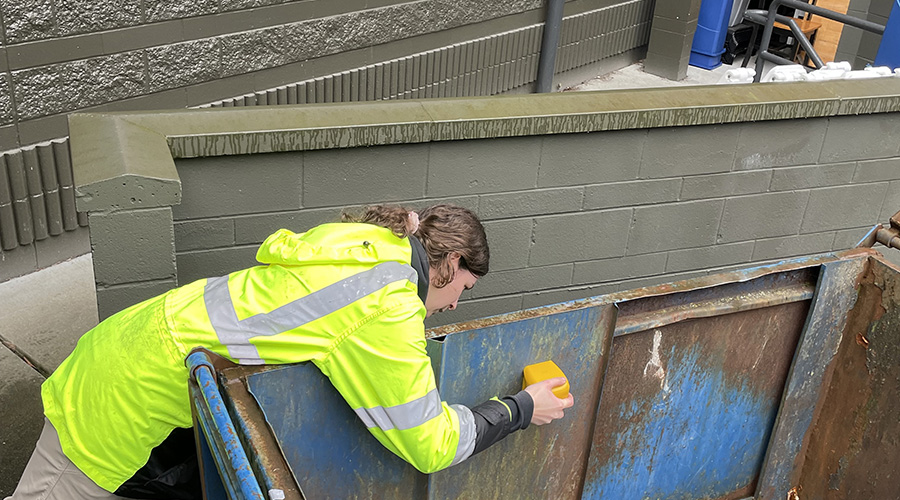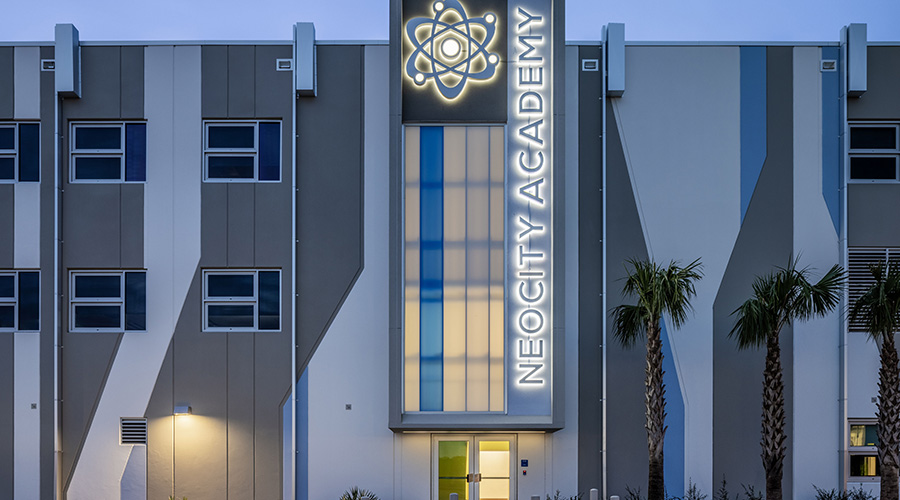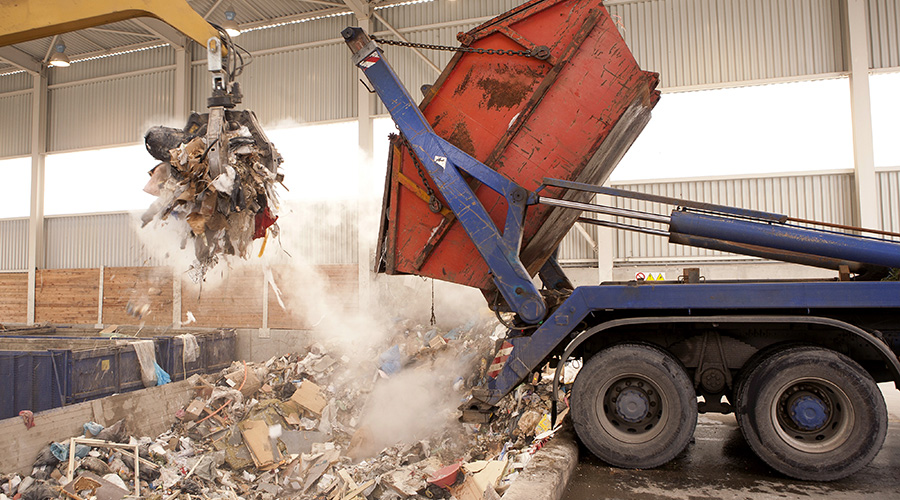4 Immediate Reasons to Focus on Sustainability
President Biden’s new Executive Order signals a shift in federal priorities. It also means now is the time to re-focus on sustainability in the private sector. Here are four specific reasons why.
President Biden recently signed the “Federal Sustainability Plan" (Executive Order 14057) which outlines ambitious goals to achieve net-zero emissions by 2045. These goals apply to both owned and leased buildings, campuses, and installations over 25,000 square feet. In the wake of this plan, businesses, schools and organizations alike should look to develop a strategy that manages their buildings’ carbon footprint.
While the plan is broad in scope and includes the use of clean alternative energy among other key aspects, there is a justifiable focus on buildings given they account for about 40 percent of U.S. energy consumption and greenhouse gas emissions. Smart buildings are now a boardroom-level discussion as greater emphasis is placed on reducing energy consumption.
Driven by both opportunity and circumstance, facilities managers and building owners are taking a hard look at the sustainability of their buildings. Here are four reasons why:
1. A Shift Toward Sustainability at the Federal and Local Levels
As the largest landowner and lease holder, and for that matter the nation’s largest employer, the U.S. federal government has a fair amount of say and sway in the real estate market, how facilities are managed, and how properties are developed. This means buildings must meet the goals laid out in the plan if owners intend to get involved in the federal real estate market.
President Biden’s latest executive order to focus on sustainability is likely just the first in what will be many nationwide regulations that require significant energy use reductions, and financial or tax incentives that will extend to the state and local level.
Major cities and governing bodies around the globe began introducing carbon emission reduction goals for buildings. New York City’s Local Law 97 already defined aggressive emission reduction goals. Like the Federal Sustainability Plan, Local Law 97 is targeted at buildings over 25,000 square feet and will require new energy efficiency and greenhouse gas emissions limits to be met by 2024, with stricter limits in 2030. The goal is to reduce the emissions produced by the city’s largest buildings 40 percent by 2030 and 80 percent by 2050.
President Biden’s executive order takes an even more aggressive stance. After September 30, 2023, all new leases will be green leases, as defined by the U.S. General Services Administration. This includes the need to report annual data on facility GHG emissions, energy and water consumption, and waste generation. Further, by 2030, all leases greater than 25,000 RSF will be net-zero emissions buildings.
2. People Want to Work for a Company with a Strong Social Conscience
Sustainability has become a pillar for corporate social responsibility efforts and is now tied to corporate reputations. The world-wide corporate race to net-zero has already begun with many companies making environmental commitments understanding the broader impact, whether that be to the environment, the community, businesses or its employees. They also understand that to attract and retain talent, they must do more than just talk.
Buildings play a key role in how most companies operate, with energy costs typically accounting for a third of total operating cost for a commercial building (ENERGY STAR). Many companies are trading quantity for quality, moving to smaller sites that are more sustainable by design, or renovating, upgrading and retrofitting their current workplaces for maximum energy efficiency and space utilization. Creating a sustainable facility can positively impact financial and reputational strength, service delivery capability, as well as employee well-being and productivity.
3. A Shifting Concept of the Office Creates Opportunity for Sustainable and Smarter Buildings
The ability to reduce energy waste remains a prominent conversation with regards to smart buildings. However, we’re also seeing a shift in those conversations to use cases beyond sustainability. Today, many organizations are now in the process of re-examining what their office should be and can do. There is a unique opportunity to upgrade facilities to accommodate and prioritize health, wellness and sustainability, especially as many office spaces sit idle during this transitory period of hybrid work. The health and safety of employees returning to an office environment is top of mind, and being able to monitor and control air quality, space usage and occupant density will be critical to protecting the hybrid workplace. Reimagining the workspace for flexibility will also be key, and the ability to configure and reconfigure spaces without significant physical infrastructure changes will be a must.
To do this, all systems need to be on a common reporting platform, creating easily accessible data to find and remediate faults and performance issues. It also gives the ability to manage spaces now and forecast the future — critical for addressing energy savings, reduction of total life cycle costs, business efficiency and sustainability.
4. Sustainability Goals Drive Innovation
Smart building technology has been rapidly evolving over the last few years and is now front and center for new construction, as well as retrofit. This couldn’t come at a better time. Going beyond just connecting and interconnecting, smart building intelligence collects and applies actionable data from a growing array of user devices, sensors, systems, and services deployed across building or campus. Applying that data using artificial intelligence and machine learning makes the building both programmable and responsive to the needs of the users and the building manager.
The evolution of power over ethernet (PoE) from 15W to 90W of power across Ethernet cabling opens the doors to a vast array of connected and interconnected devices, sensors and controllers that allow you to take command of your hybrid workspaces in ways one could have only dreamed about. Using PoE to power devices also offers greater location flexibility and lower cost to create, deploy and operate than using AC power. And it dove tails nicely with DC Grid technology and local energy storage systems.
Connecting lighting, shades, HVAC systems, and sensors enables building operators to automatically adjust temperature, shades, and lighting based on time of day and occupancy. A smart building can, for example, leverage data it collects to reduce use of electric lighting by adjusting shades to let in more natural light. Or conversely, reduce cooling requirements by lower shades and turning up lights when room temperatures increase; this has proven to lower power usage dramatically.
While the significant energy savings and a dramatic reduction in greenhouse gas emissions is the goal, deploying smart building technology has also come with a huge side-benefit — a safer, healthier, more controllable work environment that can be leveraged as hybrid work transitions to more in-person collaboration.
The same foundational smart building technologies that promote a sustainable workplace can be used to create a healthier workspace, and sensors are showing up everywhere. Embedded in access points, displays and cameras, building managers can now easily monitor occupancy along with density and environmental qualities like temperature, humidity, CO2, VOCs, and ambient light.
With this real-time data – like location analytics – building managers can automatically adjust ventilation and humidity, and better implement safety protocols and processes for space assignment, disinfection, cleaning, social distancing, and contact tracing.
This means “double bang” for the investment; more sustainable and healthier.
Invest in Buildings Now for a Better Tomorrow
Now is the time to take a closer look at buildings as the Federal Sustainability Plan is just a glimpse of what is to come. The risk of waiting too long could put organizations at a disadvantage, not only for federal government leasing, but for the future of high-value leasing in general. More of the industry is starting to recognize that sustainability is not fad, and that the technology is there to meet the ever-pressing needs of the return to a safe workplace, and to create a sustainable future.
Have a closer look at the Federal Sustainability Plan here.
Jeff Meek is a product marketing manager at Cisco handling Enterprise Network switching and smart building networking technology.
Related Topics:








.jpg)



